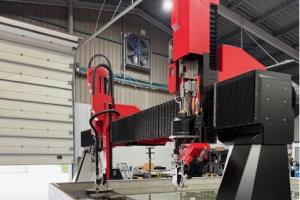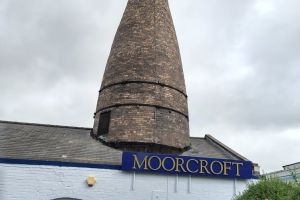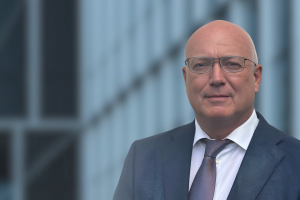Talking Business: Anthony Leonard, Hines UK

In the latest in a series of ‘Talking Business’ interviews, Anthony Leonard of Hines UK chats to the editor of TheBusinessDesk.com, Andy Coyne, and KPMG Midlands head of infrastructure, building and construction, Mike Froom.
COMMENTTime to find our voiceTHE Midlands has a lot to offer the inward investor. Its proximity in relation to London, together with the ability for businesses to easily connect to the rest of the UK is a key selling point. When you add this to major developments underway in the city such as New Street Station, which will create a new Gateway to the city, physically, things are moving and we have a great package to put forward. Competition for investment is fierce and never more so than right now, with developed and developing economies competing for inward investment. As a result, we need to make sure our offering is as strong as it could possibly be to draw the attention of the world and hold it. The ambition of the city and surrounding region is one such element. Recently, Birmingham City Council unveiled plans for six new economic zones, which will attract £1.5bn in investment and create tens of thousands of jobs. Focusing upon advanced manufacturing, electronics, life sciences and more, the clustering approach will drive centres of excellence. The current chink in our investment proposition, however, is the city’s ability to articulate what we are about and what we have to offer. We have undoubtedly made significant headway in this – indeed, the Marketing Birmingham Regional Observatory states an 18% increase in investment projects over the previous year – but I can’t help but feel that we could achieve more if the region as a whole had a collective voice. The time is right for the Midlands to have a strong and cohesive representation. The ambitions are bold and we have everything going for us. We have a lot to shout about – we just need to shout louder.
|
THE man who heads up the UK operation of the US property investment and development firm which owns much of Brindleyplace and the Two Snowhill scheme in Birmingham says it is unlikely to be making any further investments in the city in the near future. Hines UK director Anthony Leonard says: “We have been 75% in London over the last two years and 25% outside. “I think in future we may be more skewed towards London but we will continue to do things in other cities. “Birmingham we see as an opportunity but before we do anything new we want to see space leased in our current buildings. “We’ve got enough on our plate managing what we’ve got here without adding to that.” Not that Leonard is pessimistic about the prospects of the second city. “In terms of the overall Birmingham economy and the demand side for office space over the medium to long term, I think it’s in great shape,” he says. “All the fundamentals are in place and the investment in infrastructure that leads to growth is happening. “What’s causing the problem right now is nothing to do with Birmingham. It’s an issue all over the UK caused largely by what’s happening on the Continent. “The Birmingham take-up figures for office space this year look very poor but that’s the same in cities across the UK, with a couple of exceptions.”
In July 2010, it bought a sizeable chunk of the mixed-use development Brindleyplace, alongside Moorfield, from developer Argent and then followed this up in 2011 by taking over the financial ownership of the 14-storey office tower Two Snowhill, which is nearing completion as we speak. It then bought the 44,000 sq ft One Eleven Edmund Street, which is let to law firm Gateley. As things stand, though, that’s it for now. While Two Snowhill has a large pre-let in the shape of law firm Wragge & Co, there is still plenty of other space to let on the scheme. Perhaps unsurprisingly for a man in his position, Leonard spends a lot of time weighing up commercial property supply and demand issues. “For the larger corporates who want Grade A space (in Birmingham} the number of choices they have are already limited,” he says. “As things picks up will go very quickly go from an occupier’s market to a landlord’s market.” The problem is, of course, that speculative development is out of the question at the moment given weak occupier demand and even weaker interest from banks in funding it. “There are huge potential rewards but no one wants to take that risk currently,” Leonard admits. “People don’t want to do speculative development and the second problem is that the people who want to do more risky things have high return requirements and you can’t get those returns without debt. “And there is currently no bank debt available for speculative development. “It’s going to take someone finding a clever way of structuring things or for a building to be 100% pre-let. “That will come through. We are seeing in some other cities that pre-let conversations are starting to happen.” Leonard – like many in the commercial property sector – is of the view that these problems are, to a degree, cyclical and that demand for new accommodation will eventually become more important than being cautious. “The next phase of the development cycle will be people who can’t find the space they want. They can either stay put or enter into a pre-let,” he says. “The problem is if you want 60,000 sq ft in Birmingham you are a relatively large occupier but it is hard to build a 60,000 sq ft building. “There are a lot of costs involved in getting on site so you need a building of a certain size,” he says. And Leonard doesn’t believe partial pre-lets – even large ones like Wragge’s at Two Snowhill – would be enough now to get money in the bank and a spade in the ground. “I’m not sure if that could happen now. I think things are tougher than when we did Two Snowhill,” he says. “I’m not sure you will find another pre-let of that size and I’m not sure there is demand from funders for that.” Does that mean then that more high-spec refurbishments are the way forward? Leonard isn’t convinced. “It’s hard to see many buildings whose fundamental structure is good enough to allow redevelopment to attract really big occupiers,” he says. Issues of supply become more acute when dealing with potential inward investors. “It will pick up but the concern is that local occupiers who are here today can plan three to five years ahead but an inward investor will only come if the building is there ready to occupy today,” he says. “That’s where Birmingham could be missing out in a year or two’s time and the danger is people go elsewhere. “The issue isn’t that there won’t be more buildings it’s the time lag.” Leonard believes an increase in take-up will create momentum and drive the market forward. “It can go very quickly. One day nobody will want to look at speculative development but then take-up increases and sentiment can change very quickly,” he says. In the meantime, it is important that the right things are put in place at the city level, he argues. “I think what Birmingham is doing with investing in the station and the airport is so important,” he says. “People’s first impression will be transformed in a few years’ time when they arrive at New Street. “It is important to see physical investment. To me the station is the thing that will help Birmingham’s prospects the most.” SectorsCommentsIf you'd like to leave a comment, please register now for free or login
|



 Hines UK has certainly been a big backer of Birmingham over the last few years.
Hines UK has certainly been a big backer of Birmingham over the last few years.







